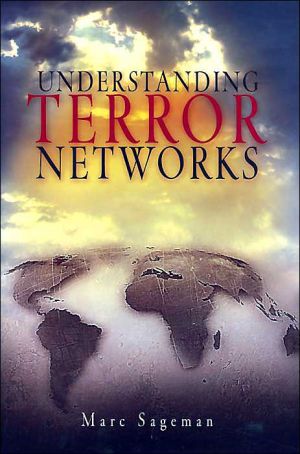Understanding Terror Networks
For decades, a new type of terrorism has been quietly gathering ranks in the world. America's ability to remain oblivious to these new movements ended on September 11, 2001. The Islamist fanatics in the global Salafi jihad (the violent, revivalist social movement of which al Qaeda is a part) target the West, but their operations mercilessly slaughter thousands of people of all races and religions throughout the world. Marc Sageman challenges conventional wisdom about terrorism, observing that...
Search in google:
"In the late '80s, Sageman worked closely with Islamic fundamentalists during the Afghan-Soviet war and gained an intimate understanding of the development, form, and function of their networks. Sagemen wrote this book in order to dispel incorrect assertions about terrorist networks made by so-called experts."—Publishers Weekly Publishers Weekly Sageman, a University of Pennsylvania professor of psychiatry and ethnopolitical conflict, applies his varied experience and skills to build an empirical argument for the socio-psychological reasons why someone would join an organization such as al-Qaeda. As an officer in the Foreign Service in the late '80s, Sageman worked closely with Islamic fundamentalists during the Afghan-Soviet war and gained an intimate understanding of the development, form and function of their networks. Sageman wrote this book in order to dispel incorrect assertions about terrorist networks made by so-called experts. Using public documents, Sageman tells us that the motivation to join a militant organization does not necessarily stem from extreme poverty or extreme religious devotion but mostly from the need to escape a sense of alienation. He also disproves conventional wisdom that terrorist groups employ a "top-down" approach to recruiting, showing instead that many cells evolve from friendships and kinships and that the seeds of sedition grow as certain members of a cell influence the thinking of the others. Unfortunately, Sageman's academic and dry prose will lose readers who would be interested in his insightful argument. The growing field of counterterrorism includes many more readers than just academics, and a book like this one could have easily covered a greater portion of this market if more care had been taken to enhance the writing. (May 19) Copyright 2004 Reed Business Information.
Preface1The origins of the jihad12The evolution of the jihad253The mujahedin614Joining the jihad995Social networks and the jihad137Conclusion175AppNames of terrorists185Glossary of foreign terms191Bibliography193Index213Acknowledgments219
\ Publishers WeeklySageman, a University of Pennsylvania professor of psychiatry and ethnopolitical conflict, applies his varied experience and skills to build an empirical argument for the socio-psychological reasons why someone would join an organization such as al-Qaeda. As an officer in the Foreign Service in the late '80s, Sageman worked closely with Islamic fundamentalists during the Afghan-Soviet war and gained an intimate understanding of the development, form and function of their networks. Sageman wrote this book in order to dispel incorrect assertions about terrorist networks made by so-called experts. Using public documents, Sageman tells us that the motivation to join a militant organization does not necessarily stem from extreme poverty or extreme religious devotion but mostly from the need to escape a sense of alienation. He also disproves conventional wisdom that terrorist groups employ a "top-down" approach to recruiting, showing instead that many cells evolve from friendships and kinships and that the seeds of sedition grow as certain members of a cell influence the thinking of the others. Unfortunately, Sageman's academic and dry prose will lose readers who would be interested in his insightful argument. The growing field of counterterrorism includes many more readers than just academics, and a book like this one could have easily covered a greater portion of this market if more care had been taken to enhance the writing. (May 19) Copyright 2004 Reed Business Information.\ \ \ \ \ From the Publisher"Understanding Terror Networks is a new and different view of a new and different form of terrorism. The insights and conclusions of Sageman befit his name and will benefit seasoned observers of terrorism, practitioners, and newcomers to the field."—Security Management\ "Terrorism analysts should read the book to correct some of their procession's assumptions. The concerned citizen will gain a sobering sense of the pervasiveness and stealth of potential jihadist networks around the globe."—Military Review\ \ \








